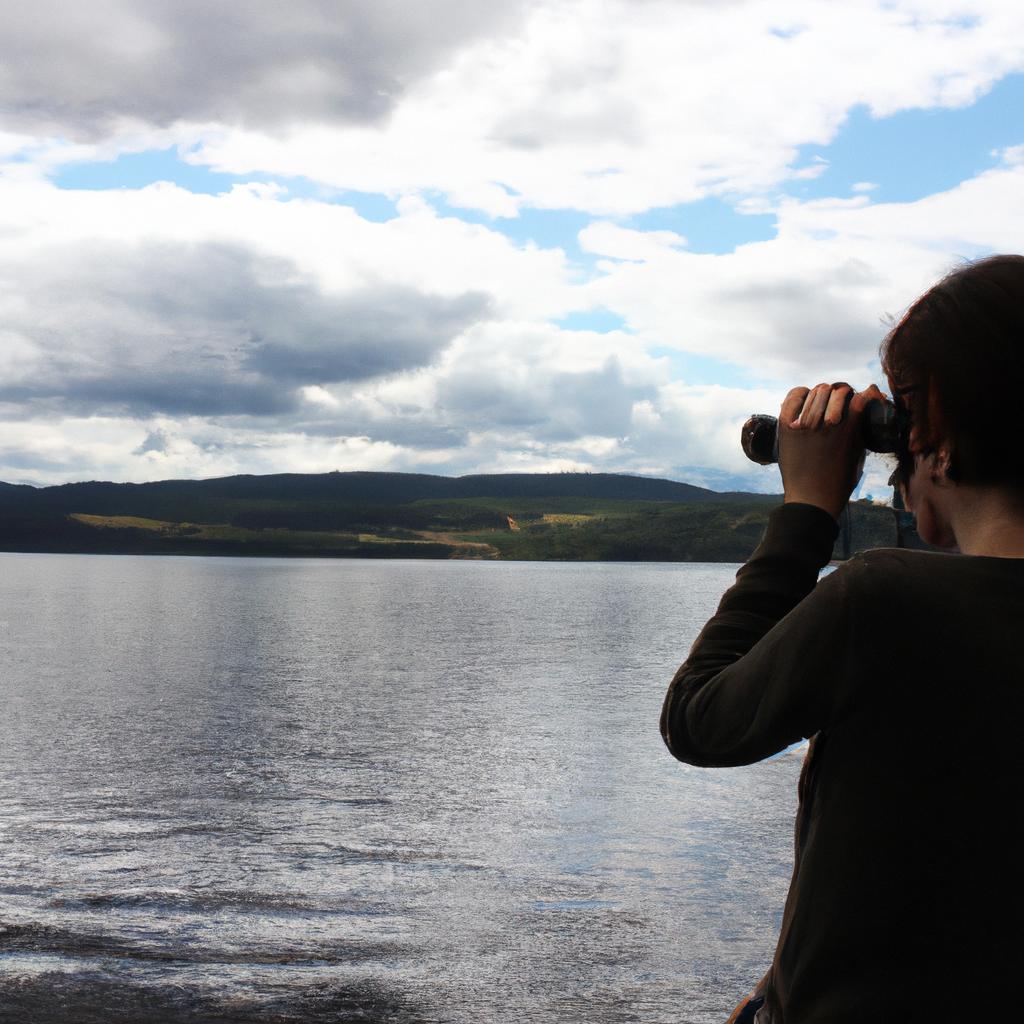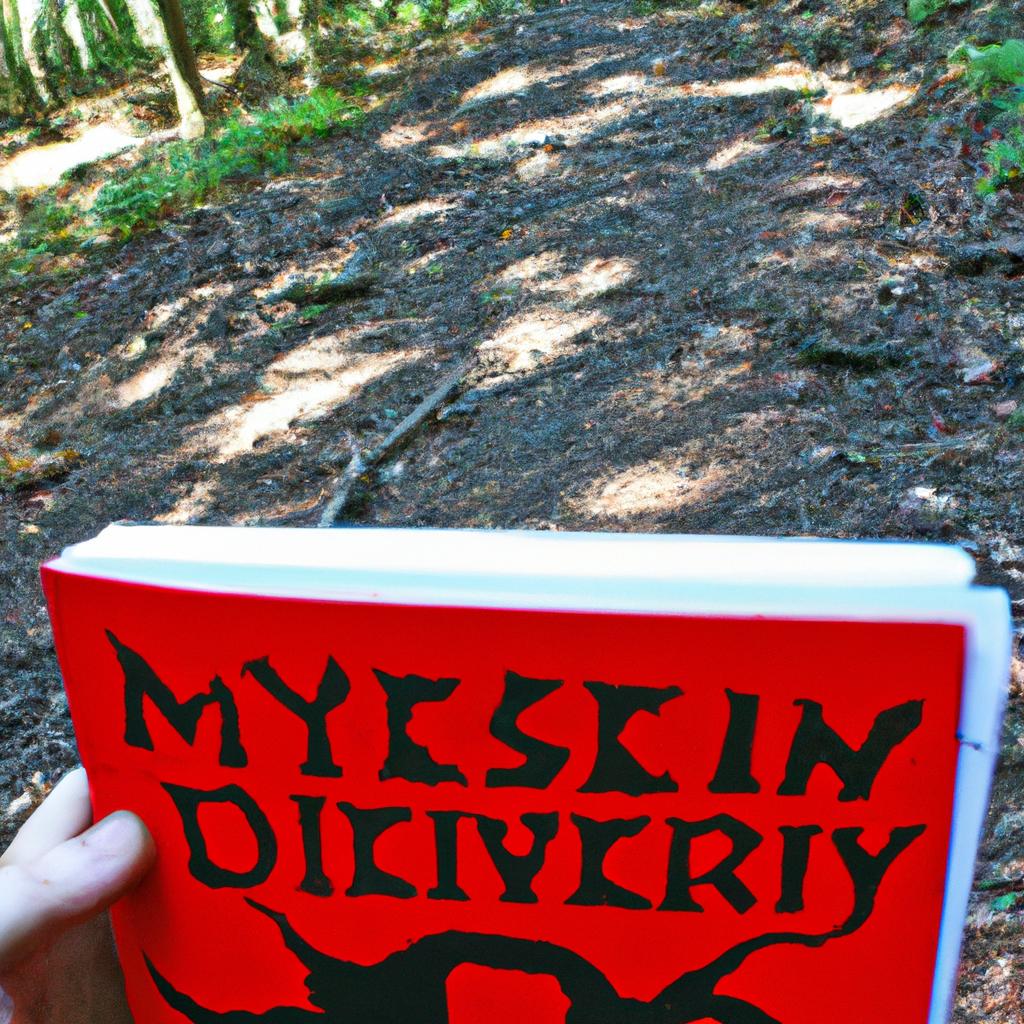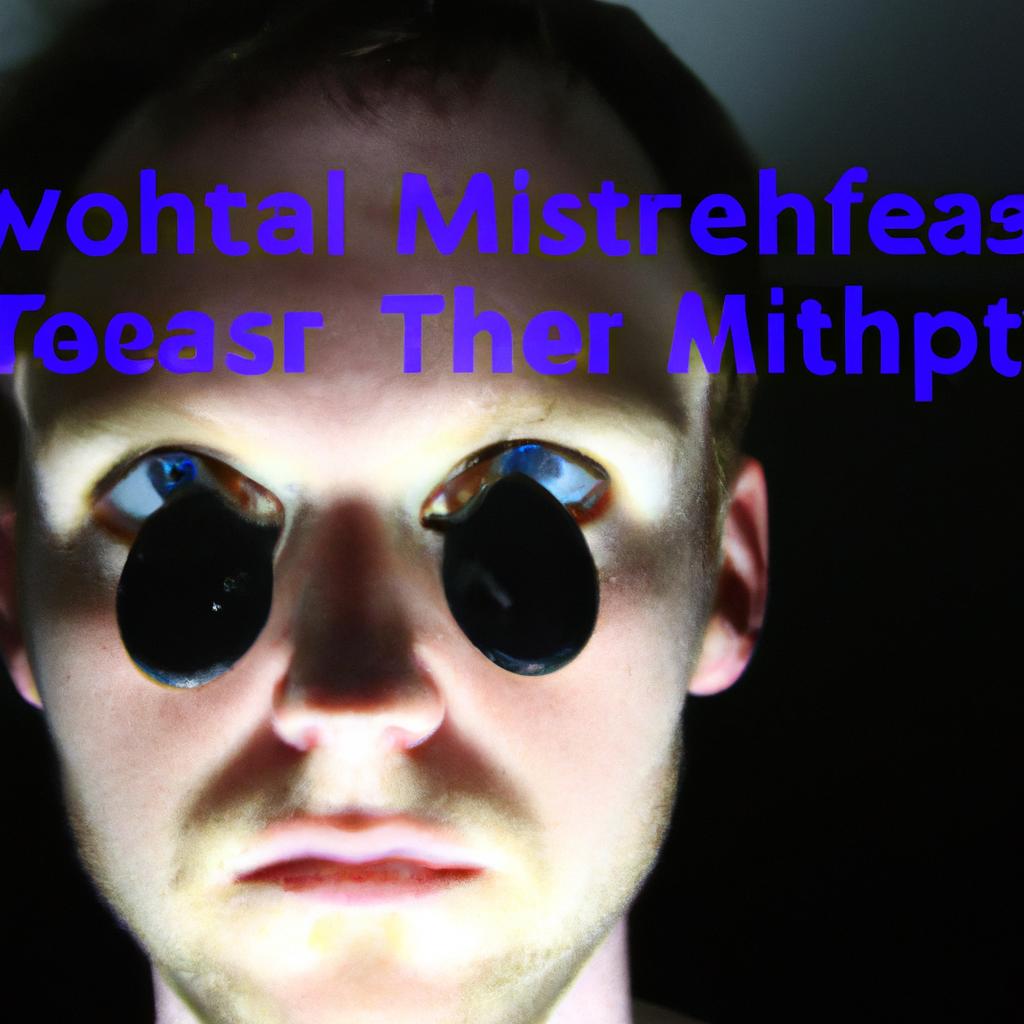Loch Ness Monster: The Elusive Cryptid of Paranormal Lore

The Loch Ness Monster, a legendary creature that allegedly inhabits the depths of Scotland’s Loch Ness, has captured the imaginations of people around the world for decades. Despite numerous reported sightings and various expeditions aimed at uncovering its existence, the true nature of this enigmatic cryptid remains shrouded in mystery. This article delves into the lore surrounding the Loch Ness Monster, examining the origins of these tales and exploring the evidence both supporting and debunking its existence.
One particularly intriguing case study involves an encounter from 1933 when George Spicer and his wife claimed to have witnessed a large creature crossing the road near the loch. Their description depicted a long-necked animal with humps protruding from its back—a classic depiction associated with the Loch Ness Monster. News of their sighting spread like wildfire, sparking widespread interest and fueling further speculation about what lurked beneath those murky waters.
In order to understand why such stories persist despite scientific skepticism, it is crucial to examine the historical context behind them. The legend of the Loch Ness Monster can be traced back centuries through oral traditions passed down by local inhabitants of Scotland’s Highlands region. These tales often revolve around encounters with mysterious water-dwelling creatures that possess supernatural qualities or powers. Over Over time, these stories became intertwined with the specific geography and folklore of Loch Ness, adding to the mystique surrounding the creature. The first modern-day sighting of the Loch Ness Monster was reported in 1933, but it wasn’t until the iconic photograph known as the “Surgeon’s Photograph” emerged in 1934 that widespread fascination took hold.
The Surgeon’s Photograph, taken by Robert Kenneth Wilson, appeared to show a serpentine creature rising out of the water. This photograph fueled public fascination and solidified the Loch Ness Monster’s place in popular culture. However, in later years, it was revealed that the photograph was likely a hoax or misidentification.
Since then, numerous expeditions and scientific investigations have been conducted to search for evidence of the Loch Ness Monster. These efforts have utilized sonar technology, underwater cameras, and even DNA analysis of water samples. While some intriguing findings have been made over the years—such as unexplained sonar readings and unusual photographs—the scientific consensus remains skeptical about the existence of a large unknown creature in Loch Ness.
Many explanations have been put forth to debunk sightings and explain away alleged evidence. Some argue that misidentifications of common animals like seals or logs can account for many sightings. Others suggest that optical illusions or psychological factors play a role in people perceiving something more extraordinary than what is there.
Despite this skepticism, belief in the Loch Ness Monster continues to captivate imaginations worldwide. The mystery and allure of an ancient creature hiding beneath the dark waters of Loch Ness keep people coming back for more exploration and speculation. Ultimately, whether real or mythical, the legend of the Loch Ness Monster will likely persist as long as there are those who seek adventure and wonderment in its depths.
Origins of the Legend
Imagine standing on the shores of Loch Ness, a picturesque lake nestled in the Scottish Highlands. Your eyes scan the water’s surface, searching for any sign of movement or disturbance. Suddenly, out of the corner of your eye, you catch a glimpse of something massive and mysterious emerging from beneath the depths—a long neck, humps protruding from its back—the infamous Loch Ness Monster.
The legend of the Loch Ness Monster has captivated both locals and tourists alike for centuries. While skeptics dismiss it as mere folklore or misidentifications, believers fervently argue that there is more to this creature than meets the eye. Exploring the origins of this enigmatic cryptid reveals a rich tapestry woven with history, mythology, and unexplained sightings.
To comprehend how such tales have endured through time, one must consider several key factors:
- Cultural Significance: The legend of an aquatic monster lurking within Loch Ness holds deep cultural significance for Scotland. It has become intertwined with national identity and serves as a symbol of pride and intrigue.
- Historical Context: Accounts dating back to ancient times mention encounters with large creatures inhabiting bodies of water across various cultures worldwide. These stories often feature similarities to those associated with the Loch Ness Monster.
- Scientific Exploration: Over decades, numerous scientific expeditions have been launched in an attempt to unravel the mystery surrounding this elusive creature. Some studies employ advanced technologies like sonar scanning and DNA analysis to search for evidence hidden beneath the murky depths.
- Pop Culture Influence: Movies, books, documentaries—popular culture perpetuates fascination with legends and myths like that of the Loch Ness Monster. This influence contributes to public curiosity and ongoing discussions about its existence.
Table 1 illustrates examples from different regions around the world where similar legendary creatures are reported by eyewitnesses:
| Region | Cryptid | Description |
|---|---|---|
| Scotland | Loch Ness Monster | Long neck, humps on back |
| Canada | Ogopogo | Serpent-like creature in Okanagan Lake |
| Sweden | Storsjöodjuret | Large lake serpent in Lake Storsjön |
| United States | Champ | Sea monster in Lake Champlain |
The origins of the Loch Ness Monster legend are deeply rooted in history and folklore. While some may dismiss it as a mere fabrication or misinterpretation, the enduring fascination with this mysterious creature continues to captivate both believers and skeptics alike.
Transitioning into the subsequent section about “Eyewitness Accounts,” let us delve deeper into the narratives that have shaped our understanding of this elusive cryptid.
Eyewitness Accounts
Section H2: Eyewitness Accounts
Eyewitness accounts of the Loch Ness Monster have fascinated and perplexed believers and skeptics alike. These testimonies provide intriguing insights into the alleged existence of this elusive cryptid, fueling speculation about its true nature. One such account involves a fisherman named Angus MacDonald, who claimed to have seen a massive creature emerging from the depths of Loch Ness during an early morning fishing expedition in 1963. His detailed description of a long neck and humps protruding from the water captured public imagination and further perpetuated the legend.
To better understand the impact of these eyewitness accounts, it is important to examine their common themes and variations. While each testimony may differ in specific details, several consistent patterns emerge:
-
Varying Descriptions: Witnesses often describe the creature as having a long neck and back with humps or coils protruding above the surface of the water. However, there are differences regarding its size, coloration, and overall appearance.
-
Emotional Responses: Eyewitnesses frequently report feeling awe, fear, or excitement when encountering the creature. The presence of such strong emotions highlights the profound impact that sightings can have on individuals.
-
Corroborative Evidence: Some sightings include additional evidence such as photographs or videos purportedly capturing glimpses of the Loch Ness Monster. While many of these pieces of evidence have been debunked over time, they contribute to shaping public perception and sustaining belief in its existence.
-
Cultural Significance: The Loch Ness Monster has become deeply ingrained in Scottish folklore and popular culture worldwide. Its mythical status adds an element of fascination beyond mere scientific curiosity.
These eyewitness accounts offer tantalizing glimpses into encounters with what some believe to be a mysterious entity lurking beneath the waters of Loch Ness. They serve as compelling narratives that continue to captivate both locals and tourists visiting the area.
Transitioning seamlessly into subsequent section H3: Scientific Investigations, researchers and scientists have dedicated extensive efforts to unravel the truth behind these enigmatic sightings. Through rigorous scientific methodologies and cutting-edge technology, they seek to shed light on this enduring mystery.
Scientific Investigations
Section H2: Scientific Investigations
Eyewitness accounts have long fueled the fascination surrounding the Loch Ness Monster, but in recent years, scientific investigations into this elusive cryptid have taken center stage. Researchers from various disciplines have employed advanced technology and rigorous methodologies to shed light on the mysteries lurking beneath the surface of Loch Ness.
One compelling example is a study conducted by marine biologists using sonar imaging devices. In their research expedition, they captured an intriguing image of a large, unidentified object moving swiftly through the depths of Loch Ness. This finding sparked further interest among scientists and ignited hope that concrete evidence could finally be obtained. However, upon closer analysis, it was revealed that the image corresponded to a school of fish swimming together in a synchronized pattern—highlighting how easily misinterpretations can occur when dealing with complex underwater environments.
Scientific investigations into the Loch Ness Monster have faced numerous challenges and limitations. Some key factors influencing these endeavors include:
- Vast size and depth of Loch Ness, making comprehensive surveys difficult
- Limited funding for extensive expeditions and access to cutting-edge equipment
- Unpredictable weather conditions impacting data collection efforts
- Absence of consistent sightings or patterns affecting study design and sample size
Despite these obstacles, dedicated researchers continue their quest for answers about the existence of the legendary creature. They employ innovative techniques such as environmental DNA sampling to identify species present in water samples collected from different areas of Loch Ness. By comparing genetic material found against existing databases, scientists aim to track any potential unrecorded organisms residing within its murky waters.
As scientific investigations progress, they provide valuable insights into understanding not only whether or not there is truth behind the tales of the Loch Ness Monster but also into unraveling broader questions regarding cryptozoology and folklore. The next section will delve into notable hoaxes associated with this enigmatic creature, shedding light on instances where skepticism prevailed over belief without losing sight of the enduring allure of the Loch Ness Monster’s mystique.
Hoaxes and Debunkings
H2: Scientific Investigations
While scientific investigations have attempted to shed light on the mystery of the Loch Ness Monster, they have often struggled to provide conclusive evidence. One notable case study involves an expedition conducted in 2003 by a team of researchers equipped with state-of-the-art sonar equipment. Despite their best efforts, no definitive proof of the creature’s existence was found. This exemplifies the challenges faced by scientists when attempting to unravel this enigmatic phenomenon.
To better understand why scientific investigations into the Loch Ness Monster are so complex, we can examine several key factors:
-
Ambiguous Sightings: The elusive nature of the creature has resulted in numerous eyewitness accounts that vary greatly in their descriptions and credibility. Some sightings may be genuine observations, while others could be misidentifications or hoaxes perpetuated by attention-seekers.
-
Limited Visibility: The murky waters of Loch Ness pose a significant obstacle for researchers attempting to capture clear visual evidence. The lake’s depth and underwater vegetation create conditions that make it difficult to distinguish between potential living creatures and environmental debris.
-
Lack of Replicability: Unlike controlled laboratory experiments, field studies involving cryptids such as the Loch Ness Monster cannot be easily replicated due to their unpredictability and rarity. This limits opportunities for multiple independent verifications and makes it harder to establish consistent findings.
-
Funding Constraints: Conducting comprehensive scientific research requires substantial financial resources, including specialized equipment, personnel, and logistical support. Securing adequate funding for long-term investigations can be challenging when dealing with a topic like the Loch Ness Monster that is often dismissed as pseudoscience.
Despite these obstacles, scientists continue to explore new methodologies and technologies in hopes of uncovering concrete evidence regarding the existence of the Loch Ness Monster. Their dedication reflects an ongoing commitment to understanding our world’s mysteries through rigorous inquiry.
Table Example:
| Challenges Faced | Impact |
|---|---|
| Ambiguous Sightings | Creates skepticism and undermines credibility |
| Limited Visibility | Hinders clear visual documentation |
| Lack of Replicability | Limits the ability to validate findings |
| Funding Constraints | Impedes comprehensive research efforts |
H2: Hoaxes and Debunkings
As investigations into the scientific realm have encountered challenges, it is important to also consider various hoaxes and debunkings that have influenced public perceptions surrounding the Loch Ness Monster.
Cultural Impact
The Loch Ness Monster, with its enduring mystery and captivating allure, has left an indelible mark on popular culture. Its enigmatic nature continues to fascinate both believers and skeptics alike. From literature and film to tourism and merchandise, the legendary creature has permeated various aspects of society, solidifying its place as a cultural icon.
One notable example that showcases the profound impact of the Loch Ness Monster is the case study of “Nessie Fever” in Scotland during the 1930s. As rumors about sightings spread like wildfire, local communities experienced a surge in visitors eager to catch a glimpse of the elusive creature. This sudden influx of tourists stimulated economic growth, leading to the establishment of hotels, restaurants, and souvenir shops catering to those captivated by the legend. The lasting influence of this phenomenon can still be seen today through thriving tourist attractions centered around Nessie.
To further understand the cultural significance surrounding the Loch Ness Monster, it is essential to examine its portrayal in popular media. Books such as “The Loch” by Steve Alten and films like “The Water Horse: Legend of the Deep” have perpetuated the mythos surrounding the cryptid, fueling public intrigue and speculation. Moreover, numerous documentaries attempting to find evidence of its existence have garnered substantial viewership over the years. This pervasive presence within entertainment media serves not only as a form of escapism but also as a testament to humanity’s fascination with unexplained phenomena.
In addition to literary works and visual media, there exists an array of Loch Ness Monster-themed products available for purchase. These range from t-shirts adorned with iconic silhouette images to plush toys resembling the mythical beast itself. Such commodities serve as tangible reminders for enthusiasts or simply individuals seeking memorabilia from their visit to Loch Ness. By capitalizing on this widespread interest through merchandising efforts, businesses have found ways to tap into people’s emotional connection with the legend, perpetuating its cultural significance.
The Loch Ness Monster’s impact reaches far beyond folklore and entertainment. Its allure has fostered a sense of wonderment in people worldwide, inspiring curiosity about what lies hidden beneath the depths. The next section will delve into the ongoing mystery surrounding this enigmatic creature, exploring recent developments and scientific endeavors aimed at uncovering the truth behind one of the world’s most enduring legends.
Ongoing Mystery
Section H2: Ongoing Mystery
The Loch Ness Monster has captivated the imaginations of people around the world for decades. Despite numerous reported sightings and extensive investigations, the existence of this elusive cryptid remains an ongoing mystery. This section will explore some of the factors that contribute to the perpetuation of this enigma.
One factor that fuels the ongoing mystery surrounding the Loch Ness Monster is the reliance on anecdotal evidence. Eyewitness testimonies form a significant part of the lore surrounding this creature. For instance, in 1933, George Spicer and his wife claimed to have witnessed a large aquatic animal with a long neck while driving near Loch Ness. Such compelling accounts continue to pique curiosity and maintain public interest in unraveling the truth behind this legendary monster.
Moreover, advancements in technology have both aided and complicated efforts to solve the mystery. On one hand, sonar imaging and underwater exploration techniques have allowed researchers to conduct thorough investigations into Loch Ness’s depths. These scientific endeavors aim to capture definitive photographic or video evidence of unknown creatures inhabiting its waters. However, despite these technological innovations, conclusive proof remains elusive.
The persistence of belief in the Loch Ness Monster can also be attributed to psychological factors that tap into our fascination with mythical creatures and unexplained phenomena:
- Intrigue: The allure of an unsolved mystery appeals to our innate curiosity.
- Wonder: The possibility of encountering an ancient creature ignites a sense of awe and wonder.
- Thrill: The idea that something mysterious lurks beneath the surface triggers excitement and anticipation.
- Imagination: Folklore surrounding cryptids like the Loch Ness Monster allows us to indulge in fantastical narratives.
To further illustrate how deeply ingrained this cultural phenomenon is within society, below is a table showcasing various popular theories regarding the origin and nature of the Loch Ness Monster:
| Theory | Description | Believers |
|---|---|---|
| Plesiosaur | Suggests that the Loch Ness Monster is a surviving population of these prehistoric reptiles. | Cryptozoologists |
| Eel-like creature | Proposes that the monster may be an unknown species of giant eel, adapted to its unique environment. | Local fishermen |
| Hoax | Argues that all sightings and evidence are fabricated or misinterpreted, perpetuated for publicity or profit. | Skeptics |
| Psychological effect | Posits that various psychological factors contribute to the perception of a mysterious monster in Loch Ness. | Psychologists/Researchers |
In conclusion, the mystery surrounding the Loch Ness Monster persists due to a combination of anecdotal evidence, technological limitations, and our inherent fascination with mythical creatures. The ongoing quest for proof continues to captivate both believers and skeptics alike, leaving us wondering if we will ever uncover the truth behind this enigmatic cryptid.
Next section H2: Cultural Significance






